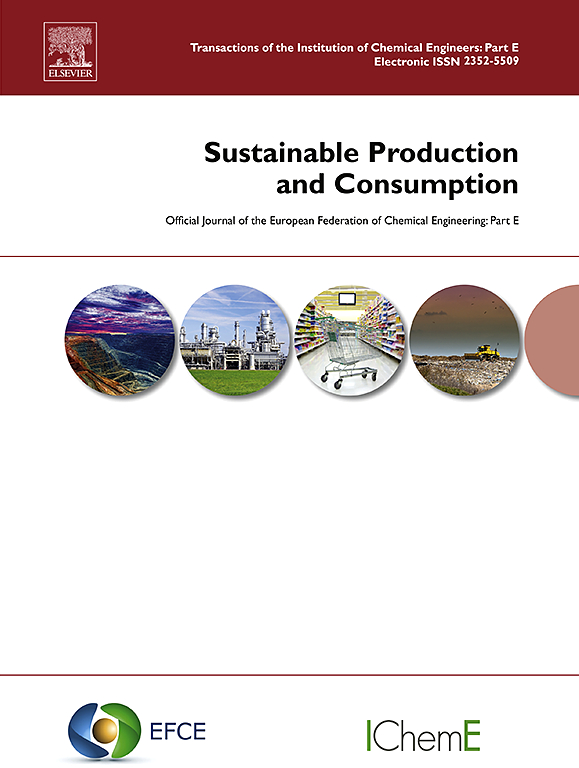Strategic productive arrangements to leverage greenhouse gas emissions mitigation in the production of sustainable aviation fuels in Brazil
IF 9.6
1区 环境科学与生态学
Q1 ENVIRONMENTAL STUDIES
引用次数: 0
Abstract
Reducing greenhouse gas (GHG) emissions in aviation is challenging, making sustainable aviation fuels (SAF) a key solution. SAF can be produced from different feedstocks, being pertinent to carrying out a Life Cycle Assessment (LCA) considering site-specific factors like biomass production and direct land use change (dLUC) to evaluate its climate mitigation potential. This study integrated feedstock yield modelling, georeferenced LCA and dLUC, and optimisation to identify sites minimising GHG emissions while meeting SAF demand at Brazil's three major airports. SAF carbon intensity ranged from −25.06 to 29.67 g CO2e.MJ−1, reflecting trade-offs between emissions, conversion technologies, and land use. Brazil's fossil jet fuel demand could be fully met with SAF using 2.4–5.6 Mha of the 18 Mha assessed, mitigating 3–7 Mt. of GHG. Scaling up for the entire study area, SAF could mitigate 101–160 Mt. CO2e (13 % of Brazil's Nationally Determined Contibution - NDC) and benefit the electricity matrix. The framework highlights the importance of regional factors in LCA and the need to address broader sustainability impacts regarding strategies for global warming mitigation.
在巴西可持续航空燃料的生产中利用减少温室气体排放的战略生产性安排
减少航空业温室气体(GHG)排放具有挑战性,可持续航空燃料(SAF)是关键解决方案。SAF可以由不同的原料生产,与开展生命周期评估(LCA)有关,考虑到特定地点的因素,如生物质生产和直接土地利用变化(dLUC),以评估其减缓气候变化的潜力。该研究综合了原料产量模型、地理参考LCA和dLUC,以及优化,以确定在满足巴西三大机场SAF需求的同时最大限度地减少温室气体排放的地点。SAF碳强度范围为- 25.06 ~ 29.67 g CO2e。MJ−1,反映了排放、转化技术和土地利用之间的权衡。巴西的化石航空燃料需求可以完全满足SAF,使用评估的18mha中的2.4-5.6 Mha,减少3-7 mmt的温室气体。扩大到整个研究区域,SAF可以减少1.01 - 1.6亿吨二氧化碳当量(占巴西国家自主贡献的13%),并使电力矩阵受益。该框架强调了LCA中区域因素的重要性,以及处理减缓全球变暖战略方面更广泛的可持续性影响的必要性。
本文章由计算机程序翻译,如有差异,请以英文原文为准。
求助全文
约1分钟内获得全文
求助全文
来源期刊

Sustainable Production and Consumption
Environmental Science-Environmental Engineering
CiteScore
17.40
自引率
7.40%
发文量
389
审稿时长
13 days
期刊介绍:
Sustainable production and consumption refers to the production and utilization of goods and services in a way that benefits society, is economically viable, and has minimal environmental impact throughout its entire lifespan. Our journal is dedicated to publishing top-notch interdisciplinary research and practical studies in this emerging field. We take a distinctive approach by examining the interplay between technology, consumption patterns, and policy to identify sustainable solutions for both production and consumption systems.
 求助内容:
求助内容: 应助结果提醒方式:
应助结果提醒方式:


